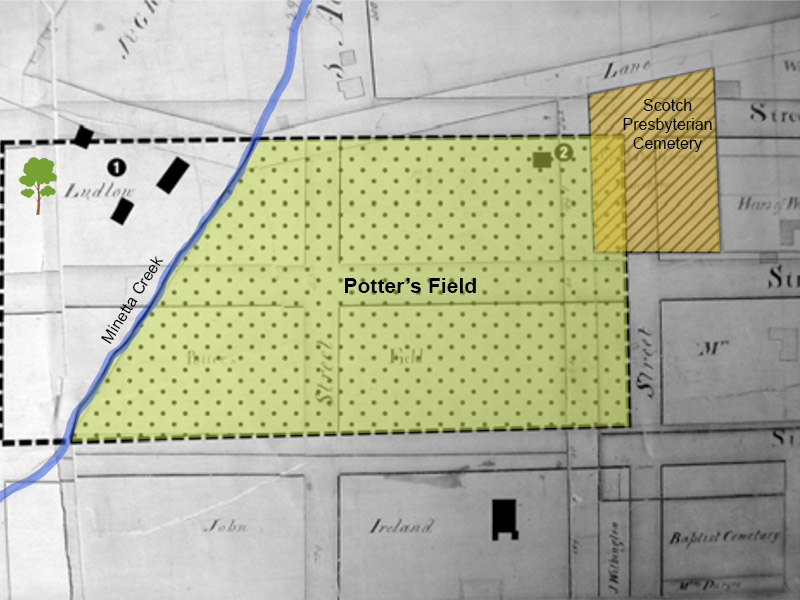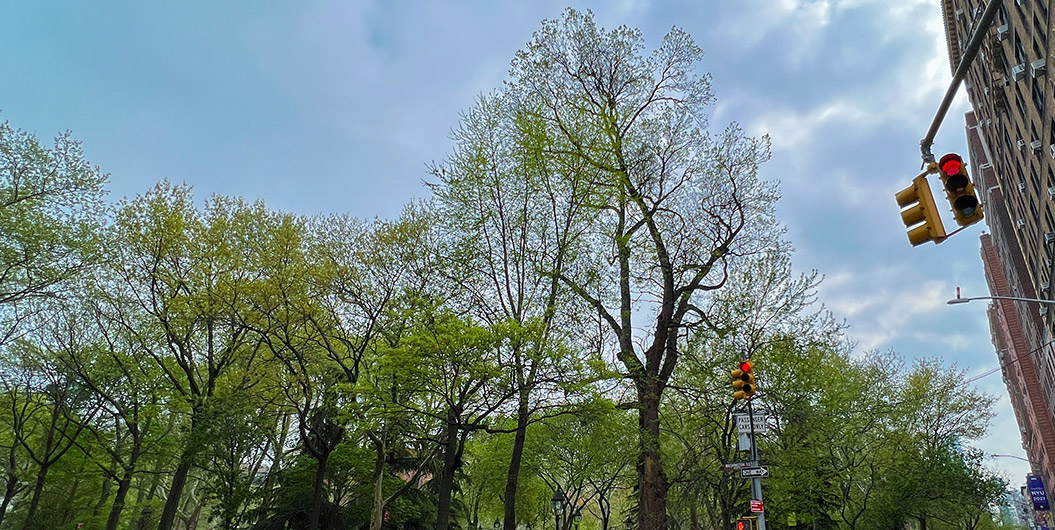The Hanging Tree and Rose Butler
In the Northwest corner of Washington Square Park in Greenwich Village stands an English Elm tree that is much taller than the trees around it. At over 300 years old, the Parks Department has declared it to be the oldest tree in Manhattan. It is known as “The Hanging Tree” or “Hangman’s Elm” although no serious historian believes there is any evidence that anyone was ever hung from it.
The eastern part of what is now Washington Square served as a potter’s field or cemetery from 1797 to 1826, but in these years, this tree stood on farmland to the west of the cemetery across from Minetta Creek. In 1826, the cemetery and creek were covered over and turned into a parade ground which expanded into land occupied by the tree. The parade ground became a park in 1849 and more trees were planted. In the early days of the park, this elm must have towered above the newly planted trees and with people knowing the park used to be a cemetery, could have inspired tales of a “hanging tree”. In fact, there is no record of this being called “The Hanging Tree” until the late 1800s.
Some claim that Revolutionary War hero, The Marquis de Lafayette, wrote that he saw a hanging here in the memoirs of his 1824 visit to the United States. It’s unclear how this falsehood spread, but the entire text of his memoirs is available online and anyone can see that he doesn’t mention seeing a hanging here or anywhere else in it.
It’s also said that prisoners from Newgate Prison, which was on the Hudson River around what is now West 10th Street, were brought to this tree to be hung, but it seems a bit far-fetched that prisoners would be hauled a half mile to a tree in the yard of bucolic farmhouses to be hung. In any case, there are no records of this ever happening.
On a personal note, the author of this post lived in a dorm on the west side of Washington Square with a direct view of the tree and never once saw spectral figures hanging from it.
There was only one actual recorded hanging in the cemetery, of Rose Butler, a 19 year old slave. She had been working in the kitchen one day and a small fire broke out. There were no injuries and only minimal damage. Nevertheless, she was convicted of arson and sentenced to death in 1820. The case became very notorious and went all the way to the New York State Supreme Court, which upheld the sentence. A gallows was constructed in the cemetery and 10,000 people came to watch her hang.
In the aftermath of her execution, public outrage began to grow that they had killed a girl over a kitchen fire just because she was black. Her hanging served as one of the growing number of catalysts for shifting views on race and slavery, which led to the 1827 abolition of slavery in New York and eventually the American Civil War.
So while you are being entertained by stories of hanging trees and ghosts, take a moment to reflect on Rose Butler who was actually hung here, but whose death was not in vain and whose remains still lie under the ground in Washington Square Park.
See The Hanging Tree and learn about Rose Butler on our Secrets of Greenwich Village Tour.

1817 Map with The Potter’s Field and Hanging Tree
